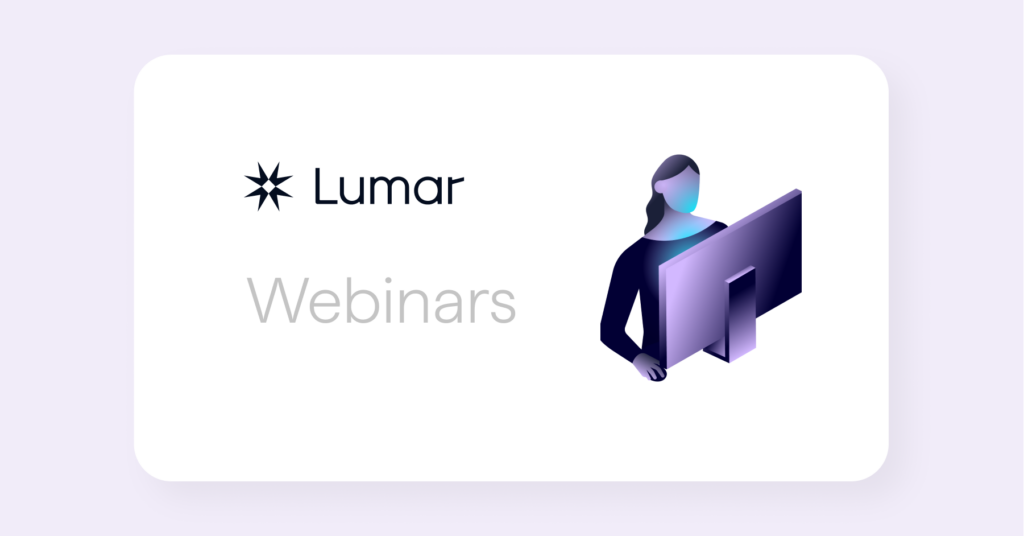The latest in our series of webinars is a deep dive into how SEOs can best present data.
Our guest this week is SEO Manager at iTech Media, Helen Pollitt. In this conversation with Ashley Berman Hale, Pollitt draws on a wealth of experience in presenting SEO data to others and identifies that it is something of a balancing act.
SEOs need to strive to be unbiased in what they present while having an understanding that recipients of that data – whether they are clients, managers, or other colleagues – do not all have the same level of understanding when it comes to search.
Here are our takeaways from their conversation. As always, check out the video for the full presentation and the accompanying Q and A.
SEOs create a lot of reports in their job, how can we ensure they are unbiased?
At the outset, Berman Hale notes a trait about statistics that is worth acknowledging – especially in this Big Data era: ‘Numbers can tell any story I want it to tell,’ she says. ‘There’s not necessarily one truth. And there are complexities in how data is accessed and gathered.’
Pollitt agrees and warns SEOs against choosing to present the positives while ignoring the negatives.
‘Don’t only report that you want your audience to see,’ Pollitt says. ‘It’s tempting to cherry-pick data that tells a good story, but that is not honest and is creating bias. You have to show the good, the bad, and the ugly.’
SEOs need to be keeping their data sources clean and safe. And there needs to be checks and measures in place to ensure we ourselves are seeing the true picture. We also need to be linking back to wider business goals throughout the reporting process – after all what good is bigging up your traffic when you are aware conversions are declining, for example.
Resisting the temptation to cherry-pick data is so important. According to Pollitt, anything that erodes trust or causes confusion can be massively detrimental to the business as a whole.
‘You lose trust and can paint a confusing picture,’ she says. ‘The audience shouldn’t be in a position where they’re scared or unable to question the data.’
After all, even if the data doesn’t look good on the surface, with the right contextual analysis and discussion around the issues, this can be a good path towards securing more buy-in or resources going forward.
How do you present data that is useful and accurate?
As a starting point, Pollitt identifies that SEOs should have an understanding of what their audiences need to know.
When it comes to the recipients of these reports, we need to ask things like:
- What do they care about?
- What are their KPIs?
- What are they being measured on themselves?
‘If you want buy-in for anything you’ve got to understand what the person you want buy-in from is really after,’ Pollitt says. ‘What data helps them to answer the questions they might have? That’s the data we should be showing.’
We also need to be wary of other things about our audience, such as their own knowledge of SEO, the time they have to read things, or whether they are just the kind of person who favors visuals over numbers.
‘Do they just need the raw data or do they need it in a way that makes it a bit more accessible for them? Pollitt asks. ‘Do they need something that tells the story very quickly or are they the sort of person that likes to interrogate that data themselves?’
Context is king, here. SEOs can tap into their own particular perspective to help others see the big picture. We can also annotate things and offer notes to really contextualize things.
As Berman Hale points out, SEOs can sometimes be a bit precious or sentimental about their data, keen to share it all when it’s best to only share 5% of it. So what’s a good strategy for sending the minimum, important stuff?
‘Less is more,’ Pollitt says.
Cheatsheets, notes, bullet points are all useful here. But have the data available too should they want to interrogate it later.
How and why should SEOs use visualization to help non-SEOs to understand notions?
The short answer: money.
‘If you want budget for SEO you need buy-in from other people,’ Pollitt says. ‘Data and visualizing that data in a smart way is how you get buy-in, it’s how you get budget as an agency and how you get resources as an in-house SEO.’
Good data visualization makes these conversations quicker and easier. Data replaces SEO jargon. It helps tell the story.
‘Images can show the flow of the concept,’ Pollitt adds. ‘I would caveat that with the fact that you do often need to wait for the right time to show the data. It might be that you’re going to have to wait a month to show the work you do. Patience is a virtue.’
What are some principles of data visualization we should stick to?
In the first place, SEOs need to ‘make sure anyone could understand it,’ according to Pollitt.
This includes using annotations and clear simple labeling. Pollitt also suggests including a glossary, particularly when considering the fast evolution of SEO terms (the Core Web Vitals metrics are a good example, here).
Another key principle is to ensure that we give context around the data – the bigger picture in terms of SEO, but also the bigger picture in terms of the business.
Thirdly, Pollitt refers to accessibility. We need to ask things like: Is the graph screen-reader friendly? Are the colors readable for people who are color-blind or who have other visual issues?
What are some good platforms that help with data visualization?
Pollitt highlights four useful tools for SEO data visualization:
- Google Data Studio – ‘It’s intuitive… it connects easily to data sources.’
- Excel – ‘it’s not glamourous – that’s where you learn principles,’ she says, highlighting that sometimes it’s best to interrogate the data manually in things like Excel to really understand it, rather than depending on automated reporting.
- Flourish – ‘Seems to have really good integrations and really good ways for visualizing data – I’m excited to dig into that.’
- Python – ‘Python can go a long long way in helping you get to your data and putting it into a format you can report on.’
What are some tips for making the most of your visualizations?
By way of conclusion, Pollitt offers two tips for making the most of our data visualizations:
- Use data as marketing collateral. She asks SEOs to think of it as proving their worth as an SEO and SEO in general. ‘It’s your opportunity to really show off,’ she says.
- Have a ‘So what?’ Use call-to-actions. Use the data to compel people to move forward and to highlight what you need them to do.





